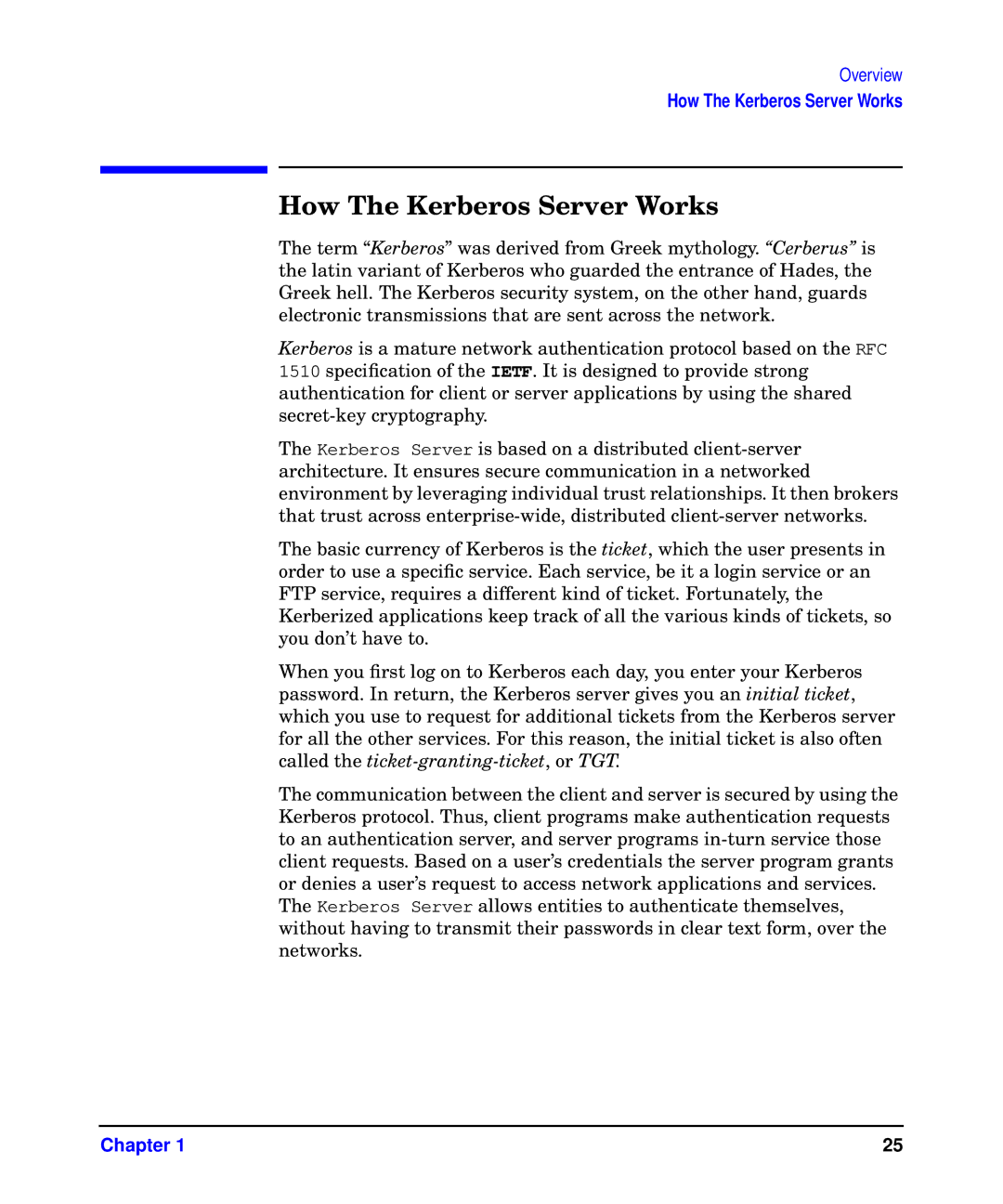
Overview
How The Kerberos Server Works
How The Kerberos Server Works
The term “Kerberos” was derived from Greek mythology. “Cerberus” is the latin variant of Kerberos who guarded the entrance of Hades, the Greek hell. The Kerberos security system, on the other hand, guards electronic transmissions that are sent across the network.
Kerberos is a mature network authentication protocol based on the RFC 1510 specification of the IETF. It is designed to provide strong authentication for client or server applications by using the shared
The Kerberos Server is based on a distributed
The basic currency of Kerberos is the ticket, which the user presents in order to use a specific service. Each service, be it a login service or an FTP service, requires a different kind of ticket. Fortunately, the Kerberized applications keep track of all the various kinds of tickets, so you don’t have to.
When you first log on to Kerberos each day, you enter your Kerberos password. In return, the Kerberos server gives you an initial ticket, which you use to request for additional tickets from the Kerberos server for all the other services. For this reason, the initial ticket is also often called the
The communication between the client and server is secured by using the Kerberos protocol. Thus, client programs make authentication requests to an authentication server, and server programs
Chapter 1 | 25 |
